The Transportation Engineering Division (TED) prioritizes, designs and coordinates projects for multimodal improvements with our Speed Management, Vision Zero Implementation, Transit Enhancement, TIA Fiscal, and Roadway Safety and Design Programs.
Area Engineer Groups
The Transportation Engineering Division, or TED, has three operational groups—North, Central, South—each with an Area Engineer and supporting staff who serve as the "face" for resolving many transportation concerns and issues. If you have a concern, request, or question regarding safety or mobility on a City street, please contact Austin 3-1-1 by phone (dial 3-1-1 in Austin or 512-974-2000 outside the city), by mobile app, or via the online form for the appropriate staff to be assigned and respond to your customer service request.
Our Area Engineer Groups routinely evaluate these types of requests and others when they are submitted through the Austin 3-1-1 system:
- New signs and markings: parking signs, stop signs, speed limit signs, speed limit changes, school zones, lane markings, etc.
- View obstructions at intersections: determinations on whether sight lines at intersections are impacted by vegetation or other objects, and how to mitigate them
- Speed management: speed control measures for residential areas
The Area Engineer Groups also review and provide determinations on these projects and proposals led by other City departments and transportation agencies:
- Right-of-way vacations, public easements, and license agreements
- Impacts and mitigations to transportation impacts from private developments and special events
- Austin Mobility Bond Programs: Corridor, Local, Regional, Capital Improvements, Safe Routes to School, Safety/Vision Zero and Local Transit Enhancement
- Regional transportation projects with TxDOT, Travis County, CapMetro, CTRMA, etc.
The following five programs compose the capital improvement projects that TED undertakes in service to the 2020 Mobility Bond, among other initiatives.
- Speed Management
-
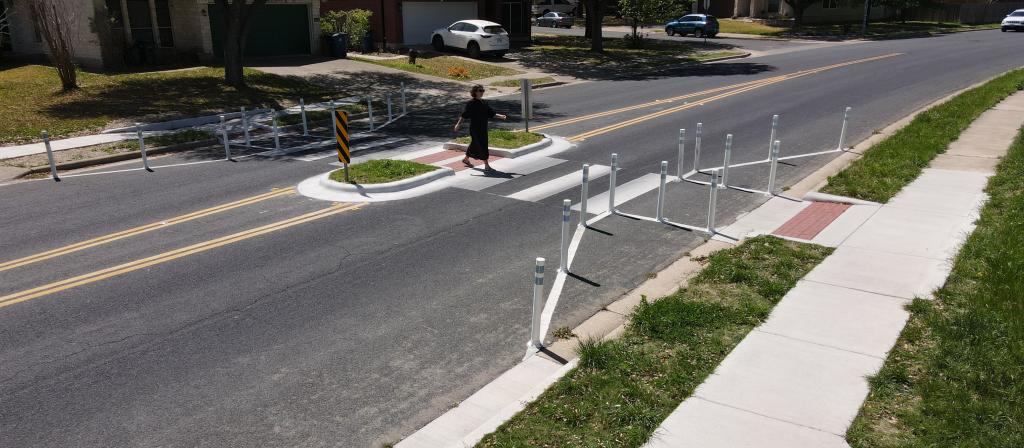
A pedestrian crosses Palace Parkway near Strickland Drive using a marked crosswalk featuring a crossing island and flex posts to encourage reduced vehicular speeds through the area.
The Speed Management Program oversees context-appropriate speed reduction strategies to improve safety and livability on Austin's streets. The program includes a data-driven process for changing speed limits and implementing appropriate traffic calming treatments. The objective of the program is to reduce egregious speeding on Austin streets, reduce the likelihood of fatal/serious injury crashes, and improve the overall quality of life of Austin residents impacted by speeding. Through the program, TED employs different methods to achieve these goals in support of Vision Zero. More information can be found on the Speed Management program webpage.
- Vision Zero Implementation
-
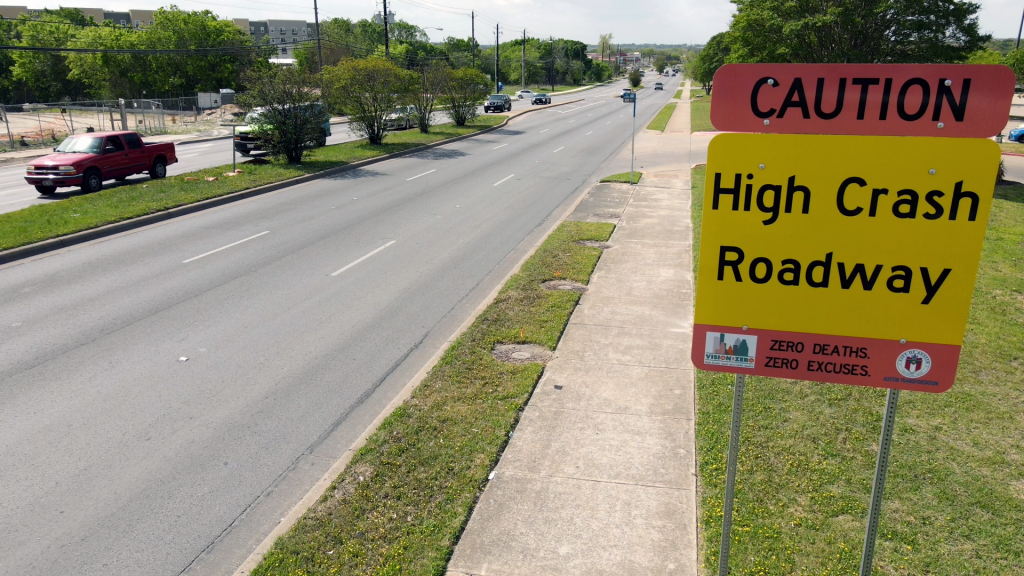
Cameron Road is a High-Crash Roadway.
TED works closely with the department's Vision Zero program to lead and implement high-quality, rapid-response, engineering solutions. These safety improvements focus on the City's High-Injury Network and systemic safety treatments in the form of signage, pavement markings, delineators, access management, and signal infrastructure. Examples include curve improvements for several high-crash curve locations, signal backplates for improved visibility, and safety lighting.
- Transit Enhancement
-
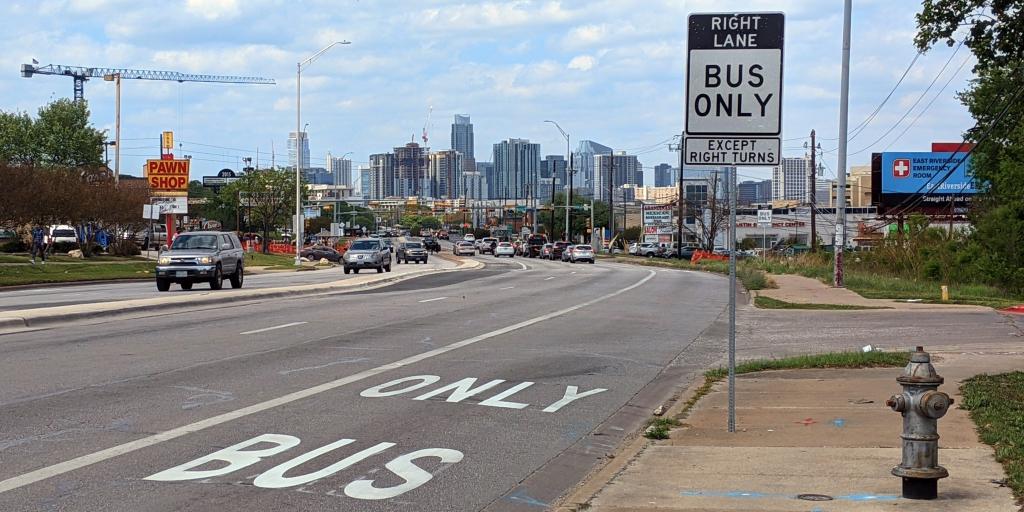
Marked bus lane on Riverside Drive provides priority access for transit vehicles.
The Transit Enhancement Program works to improve mobility and access to opportunity by collaborating directly with public transit providers and communities to understand needs and opportunities and enhance areas of the built environment to support transit. Projects developed by this program focus on improving the speed, reliability, and safety of transit operations while making transit easier and safer for customers to access. That includes making spot improvements, like designing better bus stops, to corridor improvements, like installing transit priority lanes. More information can be found on the Transit Enhancement program webpage.
- TIA Fiscal
-
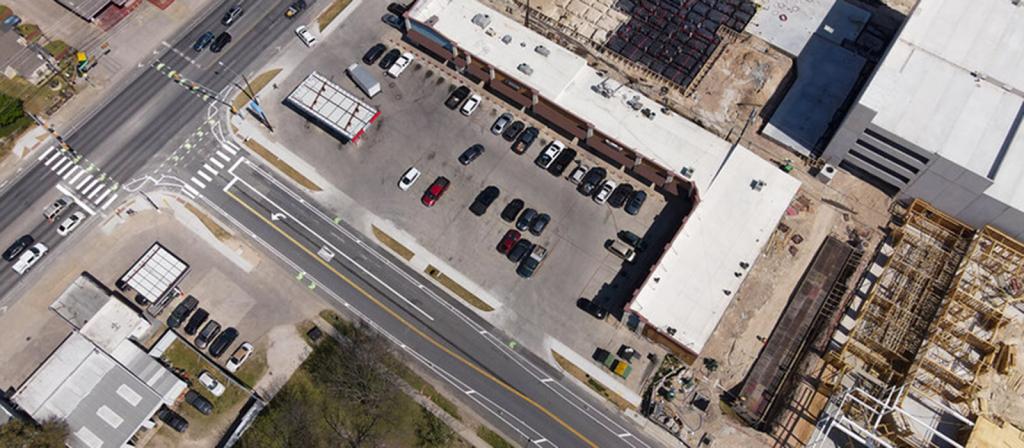
Intersection improvements at Congress and Sheraton Aves. include accessible ramps, enhanced signals, protected bike lanes and highly visible crossings.
The Traffic Impact Analysis (TIA) Fiscal program identifies and leverages transportation infrastructure improvement development funds for design and implementation of project opportunities. The TIA Fiscal program utilizes available fiscal and new fee-in-lieu development funds for the implementation of identified improvements included in TIA memorandums. The TIA Fiscal program also identifies development funds available for existing and ongoing projects being designed and implemented within Austin Transportation and Public Works Department.
Austin Transportation's TIA-Fiscal program will be constructing intersection and sidewalk improvements at the intersection of E. 6th St. and Navasota St. in September 2022. More information can be found on the project fact sheet.
- Roadway Safety and Design
-
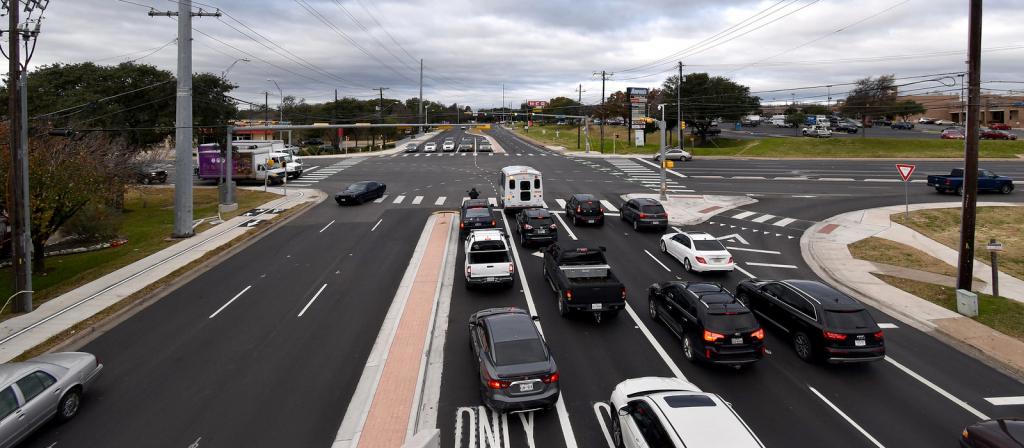
Slaughter Lane at Menchaca Road improvements include dual left turns, raised medians, a shared-use path and a new traffic signal.
The Roadway Safety and Design program provides in-house engineering services for a wide range of projects, from field engineering to site plan review and development, sidewalk and ADA ramps, speed management, intersection improvements and transit-oriented projects. Additionally, RSD develops and implements safety-oriented recommendations to pair with the City's Vision Zero goals.
Each project is developed with multi-mode transportation in mind and in coordination with city-wide partners taking scope to the design board through cost estimation and construction supervision.

